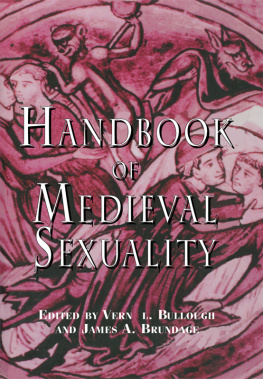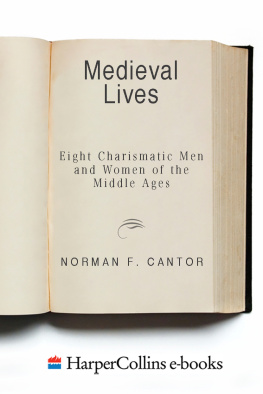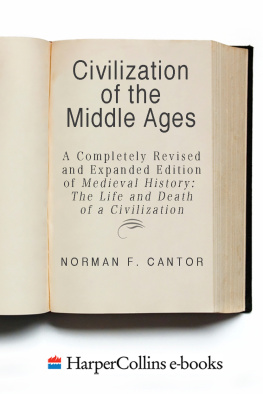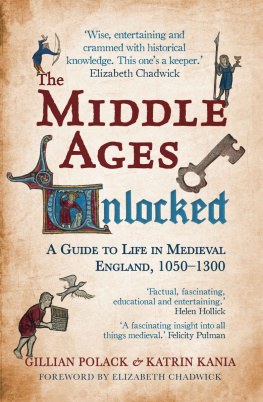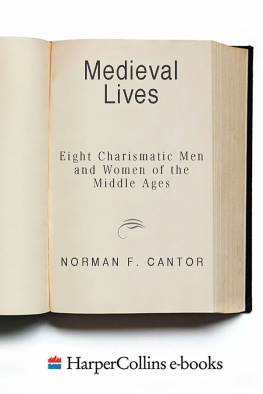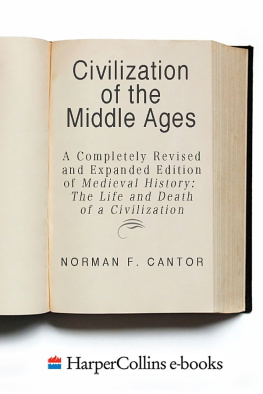HANDBOOK OF
MEDIEVAL SEXUALITY
HANDBOOK OF
MEDIEVAL SEXUALITY
EDITED BY
VERN L. BULLOUGH
AND JAMES A. BRUNDAGE

Published by Routledge
270 Madison Ave, New York NY 10016
2 Park Square, Milton Park, Abingdon, Oxon, 0X14 4RN
Transferred to Digital Printing 2010
Copyright 2000, 1996 by Vern L. Bullough and James A. Brundage
All rights reserved. No part of this book may be reprinted or reproduced or utilized in any form or by any electronic, mechanical, or other means, now known or hereafter invented, including photocopying and recording, or in any information storage or retrieval system, without permission in writing from the publishers.
Library of Congress Cataloging-in-Publication Data
Handbook of medieval sexuality / edited by Vern L. Bullough and James A.
Brundage.
p. cm. (Garland reference libarary of the humanities ; v. 1696)
Includes bibliographical references (p. ) and index.
ISBN 0-8153-3662-4 (alk. paper)
ISBN 0-8153-1287-3 (hbk)
1. Sex customsHistory 2. Middle Ages I. Bullough, Vern L. II.
Brundage, James A. III. Series: Garland reference library of the humanities ; vol. 1696.
HQ14.H35 1996
| 306.7'09'02dc20 | 95-52021 |
| CIP |
Cover illustration: Bible moralisee (Wien, sterreichische Nationalbibliothek Cod. 2554). Courtesy of the Austrian National Library
Publishers Note
The publisher has gone to great lengths to ensure the quality of this reprint but points out that some imperfections in the original may be apparent.
CONTENTS
James A. Brundage and Vern L. Bullough
SECTION I
SEXUAL NORMS
CHAPTER 1
CONFESSION AND THE STUDY OF SEX IN THE MIDDLEAGES
Pierre J. Payer
CHAPTER 2
SEX AND CANON LAW
James A. Brundage
CHAPTER 3
WESTERN MEDICINE AND NATURAL PHILOSOPHY
Joan Cadden
CHAPTER 4
GENDERED SEXUALITY
Joyce E. Salisbury
CHAPTER 5
CHASTE MARRIAGE IN THE MIDDLE AGES: IT WERE TO HIRE A BREET MERITE
Margaret McGlynn and Richard J. Moll
CHAPTER 6
HIDING BEHIND THE UNIVERSAL MAN: MALE SEXUALITY IN THE MIDDLE AGES
Jacqueline Murray
SECTION II
VARIANCE FROM NORMS
CHAPTER 7
HOMO SEXUALITY
Warren Johansson and William A. Percy
CHAPTER 8
TWICE MARGINAL AND TWICE INVISIBLE
Jacqueline Murray
CHAPTER 9
CROSS DRESSING AND GENDER ROLE CHANGE IN THE MIDDLE AGES
Vern L. Bullough
CHAPTER 10
PROSTITUTION IN MEDIEVAL EUROPE
Ruth Mazo Karras
CHAPTER 11
CONTRACEPTION AND EARLY ABORTION IN THE MIDDLE AGES
John M. Riddle
CHAPTER 12
CASTRATION AND EUNUCHISM IN THE MIDDLE AGES
Mathew S. Kuefler
SECTION III
CULTURAL ISSUES
CHAPTER 13
A NOTE ON RESEARCH INTO JEWISH SEXUALITY IN THE MEDIEVAL PERIOD
Norman Roth
CHAPTER 14
A RESEARCH NOTE ON SEXUALITY AND MUSLIM CIVILIZATION
Norman Roth
CHAPTER 15
EASTERN ORTHODOX CHRIStIANITY
Eve Levin
CHAPTER 16
SEXUALITY IN MEDIEVAL FRENCH LITERATURE: SPARS, ON EST ENSEMBLE
Laurie A. Finke
CHAPTER 17
OLD NORSE SEXUALITY: MEN, WOMEN, AND BEASTS
Jenny Jochens
CHAPTER 18
SEX ROLES AND THE ROLE OF SEX IN MEDIEVAL ENGLISH LITERATURE
David Lampe
INTRODUCTION
Medievalists in earlier generations were reluctant to deal with sex. They likewise tended to ignore topics related to sex, such as courtship, concubinage, divorce, marriage, prostitution, and child rearing. They paid little attention to women and even less to gender issues. Gradually, however, like specialists in other fields in the humanities and social sciences, they have begun to investigate and write about these matters that their predecessors studiously ignored. Medievalists who have continued to explore the more traditional subject areas sometimes complain that, in consequence of these new-found interests, those in the current generation engaged in the study of the Middle Ages have abandoned political and economic topics in order to emphasize the trendy topics concerned with family and sexual studies. We believe that the broad field of medieval studies has ample room for scholars interested in all types of thought and behavior. We would insist that sexual conduct formed an important element in the lives and thoughts, the hopes and fears, both of individual medieval people and the institutions that they created.
This is not to say that the criticisms that scholars in the more traditional fields of medieval studies have voiced are without merit. Important themes in the political, institutional, and economic life of the Middle Ages certainly remain unexplored, and we hope that studies in these fields will continue to attract younger scholars. However, we also wish to affirm that the broadening of research interests among us during the past thirty years or so has yielded significant results that have considerably enriched the whole field and at the same time have increased its interest and appeal for members of the next generation of scholars.
The decades of the 1970s and 1980s in particular witnessed an outpouring of studies dealing with various aspects of human sexuality during the Middle Ages. One reason for this is quite simply that, once academics began to recognize that it was legitimate and respectable to study sexual behavior, it also quickly became apparent that medieval records and other sources contained rich lodes of information about sexual behavior. This opened up fresh opportunities for original research and invited new interpretations of earlier conclusions about medieval society and its workings.
Earlier medievalists, to be sure, had not entirely ignored sexual topics. Traditional treatments of sexual matters, however, typically took the form of what may be described as moral discourse. Either such embarrassing matters were abruptly passed over as the instructors or writers hastened with burning blushes to apply themselves to more neutral topics, or else they distanced themselves from the subject with moralistic reflections upon the flawed nature of humankind in this wicked world. An illuminating example of the second type of reaction occurs in the writings of Leopold von Ranke (17951886), one of the founders of modern scientific history. In his study of the decline of fifteenth-century Italy, Ranke observed:
Far be it from me to pass judgment upon the temperament of a great nation, which in those days was a source of intellectual stimulus to the whole of Europe. No one can say that it was incurably sick: but it is certain that it suffered from serious diseases. Pederasty, which extended even to the young soldiers in the army, and was regarded as venial because practiced by the Greeks and Romans, whom all delighted to imitate, sapped all vital energy. Native and classical writers ascribed the misfortune of the nation to this evil practice. A terrible rival of pederasty was syphilis which spread through all the classes like the plague.
What Ranke understood by pederasty went far beyond the sexual practices that we now associate with the term; rather he used this word as a catch-all term for everything that he disliked. He continued,
We shall not [italics ours] be able to maintain without fear of contradiction that aspiration to fine language rather than to noble deeds, the imitation of antiquity in what it has achieved in the shade, rather than in what it has performed in the sun, as Machiavelli says, is mere luxury, and not healthy for a nation as such: for instance, the training of boys not merely in drawing and in composing prose and verse, but also in fine hypocrisy, as their teachers expressed it, which consisted in making speeches in public, raising and lowering the voice by turns, now affecting the tone of complaint, now that of triumph, simulating an unreal passion on an unreal theme, a practice which
Next page
